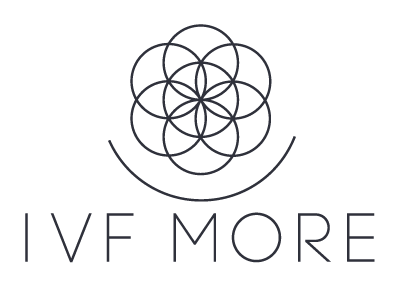What Is Egg Restoration & How Does It Differ from Traditional IVF?
August 2025

Introduction
When it comes to assisted reproduction, one of the most decisive factors in achieving a successful pregnancy is the quality of the eggs. Traditional IVF has long been the cornerstone of fertility treatment, focusing primarily on stimulating the ovaries, retrieving eggs, and fertilizing them in a lab setting. However, for individuals with poor egg quality, particularly those over 35 or with complex fertility diagnoses, traditional IVF may not be enough.
This is where egg restoration comes in. As a revolutionary form of advanced ovarian restoration, egg restoration is changing the landscape of assisted reproduction by offering a proactive way to improve and restore egg quality, rather than simply working with what is available. In this blog, we’ll break down what egg restoration is, how it works, and how it compares to traditional IVF.
The Importance of Egg Quality and Quantity in Fertility
Egg quality refers to the health of the oocyte, particularly its chromosomal integrity and ability to develop into a viable embryo. Egg quantity, on the other hand, refers to how many eggs a woman has left in her ovarian reserve. Both are essential for natural conception and in vitro fertilization (IVF) success.
As women age, egg quantity and quality decline. This is especially true after the age of 35, when mitochondrial function decreases and chromosomal abnormalities increase. Conditions like endometriosis, polycystic ovary syndrome (PCOS), and early menopause can also compromise egg health. Unfortunately, poor egg quality often leads to failed implantation, early miscarriage, or non-viable embryos in IVF.
What Is Egg Restoration?
Egg restoration is a cutting-edge technique that focuses on improving the biological and metabolic health of a woman’s own eggs. Rather than relying solely on hormonal stimulation, egg restoration seeks to restore egg quality at the cellular level. This allows individuals to use their own oocytes—even in cases where they’ve been advised to consider egg donation.
Unlike traditional IVF, which retrieves and fertilizes eggs in their current state, egg restoration works to reverse cellular damage, rejuvenate mitochondrial function, and support chromosomal stability. This holistic approach is especially beneficial for individuals with poor egg quality, repeated IVF failures, or advanced maternal age.
The Science Behind Egg Restoration: Rejuvenating Ovarian Function
At the core of egg restoration is a sophisticated combination of regenerative medicine, cellular biology, and bioengineering. The process begins with a comprehensive evaluation of each egg’s metabolic profile, which includes an assessment of mitochondrial health, energy potential, and structural integrity.
One of the most innovative advancements in this field is Magnetic Ovulatory Restoration (MORE®), an exclusive protocol developed to restore the vitality of oocytes. This technique uses:
- Cytoplasmic transfer to infuse compromised eggs with healthy cellular components from the patient’s own cells.
- Magnetic field technology to stimulate proper cell division and reduce chromosomal anomalies.
- Metabolic diagnostics to identify which eggs are suitable for restoration.
These advanced techniques aim to improve egg quality from the inside out, making egg restoration a true breakthrough in assisted reproduction.
How Egg Restoration Works
The egg restoration process typically involves the following steps:
- Ovarian Stimulation & Egg Collection: As in traditional IVF, the ovaries are stimulated to produce multiple eggs, which are then retrieved.
- Metabolic Diagnosis: Each egg is evaluated for energy production and mitochondrial health.
- Cytoplasmic Enrichment: Eggs identified as compromised receive an infusion of growth factors and cellular components from healthy cells.
- Magnetic Incubation: The eggs are incubated in a magnetic field to support cell division and genetic integrity.
- Fertilization & Embryo Transfer: Once restored, the eggs are fertilized and transferred into a hormonally optimized uterus.
This entire process aims to not only retrieve eggs but actively improve and restore their quality before fertilization occurs.
How Does Egg Restoration Differ from Traditional IVF?
Traditional IVF focuses on:
- Hormonal stimulation of the ovaries
- Egg retrieval
- Fertilization in the lab
- Embryo culture and transfer
It works well for individuals with good ovarian reserve and egg quality. However, it does not address the root causes of poor egg quality. Patients with low-quality eggs may have to undergo multiple IVF cycles or resort to egg donation.
Egg restoration, by contrast:
- Targets and improves egg quality before fertilization
- Uses regenerative medicine and metabolic diagnostics
- Allows patients to use their own eggs, even in challenging fertility scenarios
- Integrates stress-reduction and emotional support into the fertility journey
This approach is ideal for individuals who want a more advanced and personalized path to parenthood.
Benefits of Egg Restoration Over Other Fertility Treatments
Egg restoration offers several key benefits:
- Improves Egg Quality: By restoring mitochondrial function and reducing chromosomal abnormalities, the chances of a healthy embryo increase.
- Reduces Need for Egg Donation: Individuals can use their own eggs, even after repeated IVF failures.
- Ideal for Women Over 35: Especially helpful for those with age-related decline in fertility.
- Holistic and Personalized: Incorporates emotional wellness and advanced diagnostics.
- Supports Natural Fertility Goals: Some women may even choose to freeze restored eggs for future use, supporting long-term fertility preservation.
This is why egg restoration is considered a next-generation approach in assisted reproduction.
Conclusion
Egg restoration represents a transformative shift in how we approach infertility. Rather than accepting poor egg quality as a barrier, it offers a solution that restores, rejuvenates, and empowers individuals to achieve their dream of a healthy pregnancy.
While traditional IVF remains a valuable tool, advanced techniques like Magnetic Ovulatory Restoration (MORE®) are redefining what is possible. By addressing egg quality at the cellular level and offering a personalized, science-driven approach, egg restoration bridges the gap between biological limitations and reproductive potential.
If you’ve been told egg donation is your only option or have experienced failed IVF cycles, egg restoration may be the advanced solution you’ve been waiting for. Learn more about how IVF MORE® is pioneering this groundbreaking technique and schedule your consultation today.
